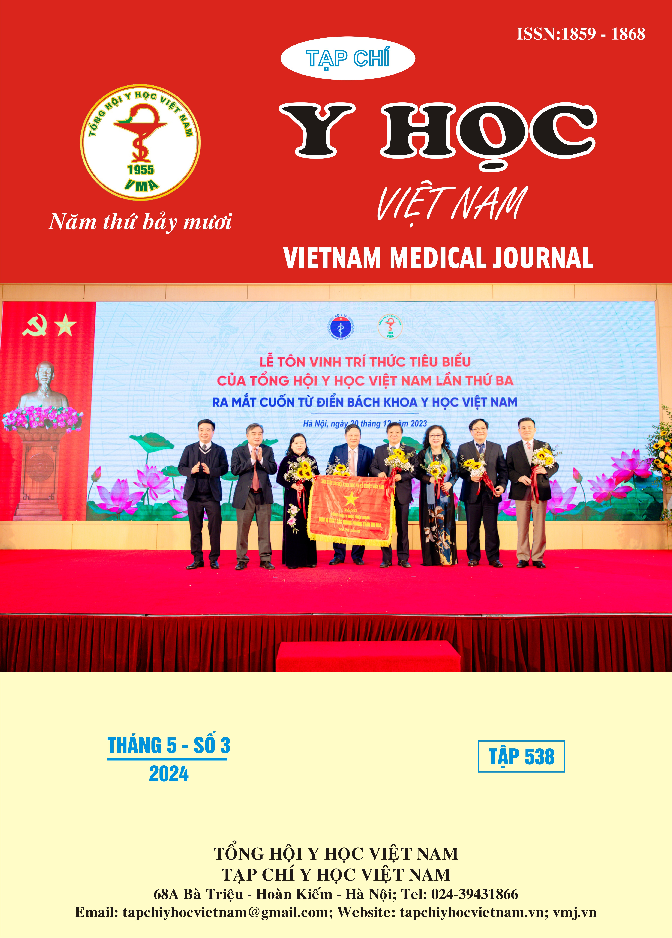THE LONG-TERM OUTCOMES OF PATIENTS WITH COMPLICATIONS OF URETERAL STRICTURE AFTER KIDNEY TRANSPLANTATION
Main Article Content
Abstract
Objective: To evaluate the outcomes of treating complications of ureteral stricture after kidney transplantation. Patients and Research Methods: Retrospective description of 33 patients diagnosed with ureteral stricture after kidney transplantation through clinical assessment and computed tomography imaging. Study parameters: Gender, source of the transplanted kidney, duration of ureteral stricture, previous interventions, method of ureteral stent placement, open surgery or endoscopy, right/left kidney, location of the stricture, causes of stricture, treatment methods, treatment outcomes after 1 month, 3 months, and 1 year. Results: 22 males to 11 females. 93.93% of the kidneys were procured from living donors, while 6.07% were from deceased donors. Endoscopic surgery was used for kidney retrieval in 78.78% of cases, while open surgery accounted for 21.22%. The right kidney was donated in 69.69% of cases. All patients with strictures had dilated renal pelvis on ultrasound and higher blood creatinine levels than baseline. The majority (66.67%) developed ureteral stricture within 1 month post-transplantation. Dilatation of the renal pelvis > 2cm on ultrasound accounted for 60.61%. The most common site of stricture on CT imaging was at the ureter-bladder anastomosis, accounting for 75.75%. Balloon dilation of the ureteral stricture was successful in 6.07% of cases. The remaining cases underwent open surgery after failed balloon dilation (24.24%) or directly upon diagnosis (69.69%). Placing the transplant ureteral stent into the native ureter was the preferred technique in 87.1% of cases, with 13% requiring additional suturing to prevent retrograde infection. Normal renal function and resolution of infection were achieved in all cases. Conclusion: Open surgery is indicated for long or failed endoscopic treatment of strictures. Placement of ureteral stents may not always be technically feasible or effective.
Article Details
Keywords
kidney transplantation, Ureteral strictures
References
2. C. Simseka, S.M. Doganb, T. Piskinb, G. Okuta, K. Cayhana, A. Aykasa, E. Tatarc, and A. Uslu. Should Interventional Radiology or Open Surgery Be the First Choice for the Management of Ureteric Stenosis After Transplantation? Dual-Center Study. Transplantation Proceedings, 49, 517- 522 (2017)
3. Brian D. Duty , John M. Barry (2015) Diagnosis and management of ureteral complications following renal transplantation Asian Journal of Urology (2015) 2, 202 -207. http://dx.doi.org/ 10.1016/j.ajur.2015.08.002
4. Karam G., Hétet J.F, Maillet F. et al (2006). Late Ureteral Stenosis Following Renal Transplantation: Risk Factors and Impact on Patient and Graft Survival. American Journal of Transplantation 2006, 6, 352–356.
5. Nie Z., Zhang K., Huo W. et al (2009). Comparison of urological complications with primary ureteroureterostomy versus conventional ureteroneocystostomy. Clinical Transplant, 2009 John Wiley & Sons
6. Streeter E.H., Little D.M., Cranston D.W. et al (2002). The urological complications of renal transplantation: a series of 1535 patients. BJU International (2002), 90, 627–634.
7. Shoskes DA, Hanbury D, Cranston D, et al: Urological complications in 1,000 consecutive renal transplant recipients. J Urol 153:18, 1995.
8. Prudhomme T, P. Bigot et al. (2009). Etude de la vascularisation artérielle de l’ uretère proximal.
9. Liselotte S. S. Ooms, Adriaan Moelker, Joke I. Roodnat, Jan N. M. Ijzermans, Mirza M. Idu, Turkan Terkivatan. Antegrade Balloon Dilatation as a TreatmentOption for Posttransplant Ureteral Strictures: Case Series of 50 Patients
10. Hamouda M., Sharma A., Halawa A. (2018). Urine Leak After Kidney Transplant: A Review of the Literature. Başkent University, Experimental and Clinical Transplantation, 1, 90-95.


